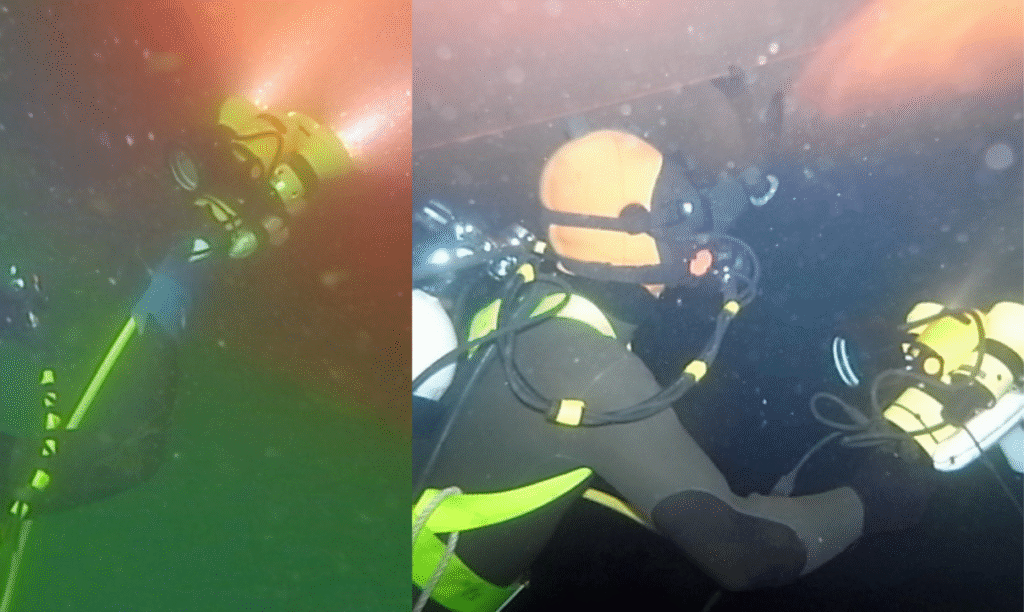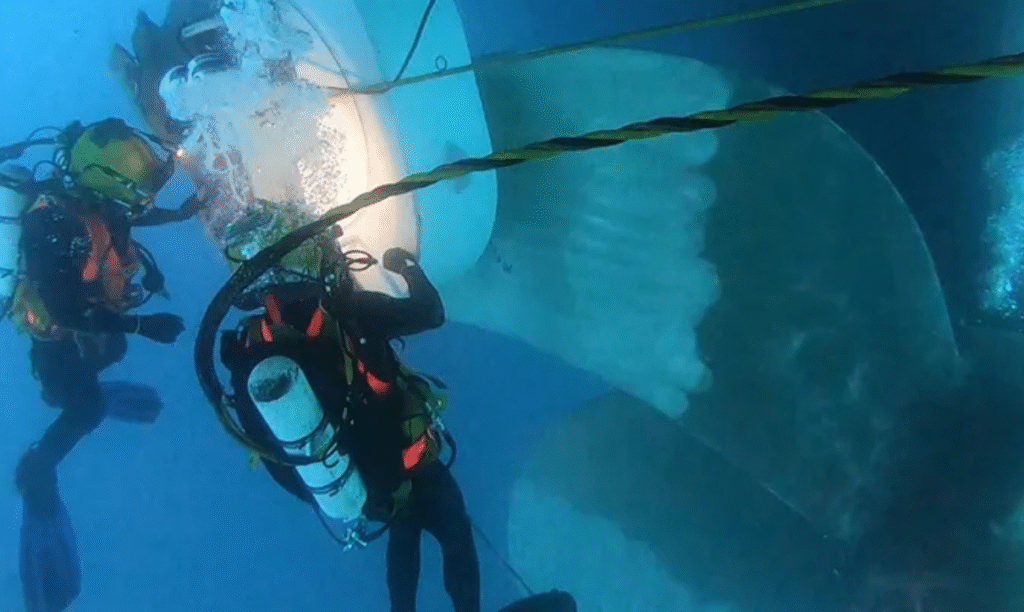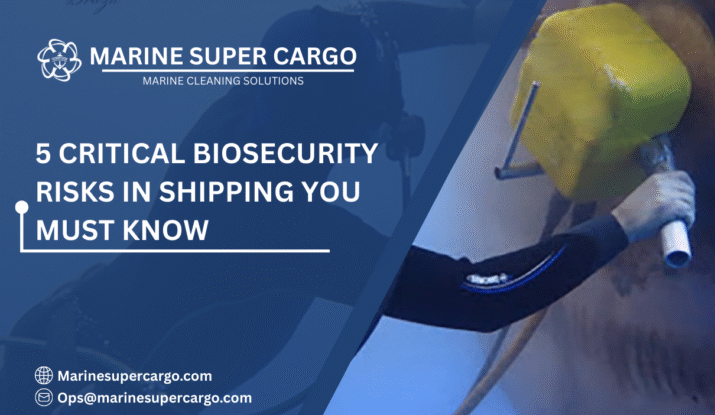Shipping connects the world, transporting goods, resources, and people across oceans. But along with the benefits of global trade comes a hidden danger: the introduction and spread of invasive species, pathogens, and harmful organisms. These threats are collectively known as biosecurity risks, and they can have devastating consequences for ecosystems, economies, and even human health.
For ship owners, operators, and port authorities, understanding biosecurity risks is no longer optional. Effective mitigation protects not just the marine environment but also ensures compliance with international regulations, avoids costly fines, and preserves operational efficiency.
In this article, we will dive deep into the types of biosecurity risks, how they are monitored and regulated across regions, and what solutions you can implement to safeguard your vessels.
What Are Biosecurity Risks?
Biosecurity risks refer to threats posed by harmful organisms or biological contaminants entering or spreading via shipping activities. These risks can originate from:
- Ballast water discharge carrying invasive species or microorganisms
- Hull fouling by algae, barnacles, or mollusks
- Cargo or container contamination
- Ship waste or bilge water containing pathogens
These organisms can disrupt ecosystems, damage fisheries, and even affect local economies. For example, the zebra mussel, introduced through ballast water, caused billions in damage to North American waterways.
In short, biosecurity risks are like silent stowaways on your ship—easy to overlook but capable of wreaking havoc if not managed properly.

Why Biosecurity Risks Matter
Ignoring biosecurity risks can have serious consequences:
- Environmental Impact: Invasive species can displace native organisms, reduce biodiversity, and disrupt ecosystems.
- Economic Losses: Fisheries, aquaculture, and tourism can be heavily impacted.
- Regulatory Penalties: Non-compliance with regional or international regulations can result in fines, port delays, or restricted entry.
- Operational Disruptions: Contaminated vessels may require extensive cleaning or quarantine.
By understanding these risks, shipping companies can implement proactive measures to protect both marine environments and operational efficiency.
Common Sources of Biosecurity Risks
1. Ballast Water
- Ships use ballast water for stability, but it can contain microorganisms, larvae, and plankton.
- When discharged, these species may invade local waters, causing ecological imbalance.
- IMO Ballast Water Management Convention provides guidelines to treat or exchange ballast water safely.
2. Hull Fouling
- Marine organisms attach to the hull during voyages.
- Fouling can transport non-native species across oceans.
- Regular in-water cleaning combined with hull inspections mitigates this risk.
3. Cargo Contamination
- Imported goods or containers can carry insects, bacteria, or fungi.
- Effective cleaning and inspection protocols prevent accidental introduction into new regions.
4. Ship Waste & Bilge Water
- Wastewater may contain pathogens or harmful microorganisms.
- Compliance with MARPOL waste regulations reduces biosecurity threats.
Regional Regulations & Compliance
Different regions have specific requirements for managing biosecurity risks:
International Frameworks
- IMO Guidelines: Sets global standards for ballast water, antifouling systems, and invasive species management.
- MARPOL Convention: Regulates pollution and discharge to protect marine ecosystems.
- IMCA Standards: Provides contractor guidelines for safe cleaning and inspection (IMCA).
Regional Practices
- Australia & New Zealand: Strict hull cleaning protocols and ballast water treatment, with penalties for non-compliance.
- Europe: EU regulations enforce biofouling management plans and reporting requirements.
- North America: The US Coast Guard monitors ballast water and invasive species under the National Invasive Species Act.
- Asia: Selected ports in Singapore and Japan require documented in-water cleaning and hull inspections.
Adhering to these regulations protects the environment, ensures smooth port entry, and avoids costly fines.
Risks of Non-Compliance
Failing to manage biosecurity risks can lead to:
- Ecosystem Damage: Non-native species disrupt local marine life.
- Financial Penalties: Fines, cleaning costs, or operational delays.
- Reputation Damage: Shipping companies may face scrutiny and reduced trust.
- Legal Liability: Owners may be held responsible for ecological damage caused by their vessels.
For instance, a cargo ship entering New Zealand without proper ballast water treatment faced over $100,000 in fines and was required to undertake emergency cleaning before docking.
Also, read about underwater hull cleaning in Ghana.
Cost Implications of Biosecurity Management
Direct Costs
- Ballast water treatment systems
- Hull cleaning and inspection
- Waste containment and filtration
Indirect Costs
- Avoiding fines and delays
- Preventing fuel inefficiency caused by hull fouling
- Reducing the risk of cargo contamination
Case Study: A European shipping company adopted routine in-water hull cleaning and ballast water treatment. Annual savings exceeded $150,000 due to reduced fines, fuel efficiency, and downtime.
✅ 4 Things to Check for Safety at Sea pic.twitter.com/dAxhJQ2i6U
— Marine Super Cargo (@Marinsupercargo) September 14, 2025
Solutions & Best Practices
1. Routine In-Water Cleaning
- Removes biofouling before organisms establish populations.
- Minimizes downtime compared to drydock cleaning.
- Integrated inspections ensure coatings remain intact (CleanShip.co).
2. Ballast Water Management Systems
- Treat or exchange ballast water in compliance with IMO guidelines.
- Prevent invasive species from entering local ecosystems.
3. Hull Coating & Inspection
- Anti-fouling coatings reduce organism attachment.
- Regular hull coating inspection identifies weak spots early.
4. Waste Management & Filtration
- Treat bilge and greywater to eliminate pathogens.
- Proper containment prevents accidental release into sensitive regions.
5. Training & Awareness
- Crew education on biosecurity protocols.
- Standard operating procedures for cleaning, inspection, and ballast water handling.

Future Trends in Biosecurity & Shipping
- Autonomous Hull Cleaning Robots: Clean and inspect simultaneously.
- AI-Powered Monitoring: Predict areas of high biofouling risk.
- Smart Sensors in Ballast Tanks: Detect microbial growth early.
- Eco-Friendly Coatings: Reduce environmental impact and maintenance frequency.
- Global Standardization: Harmonized protocols across ports for consistent compliance.
Technology is making biosecurity management proactive, efficient, and environmentally responsible.
Conclusion
Biosecurity risks are an unavoidable challenge in global shipping. Effective management protects ecosystems, ensures compliance, and enhances operational efficiency.
Key takeaways:
- Early detection and routine cleaning prevent invasive species and ecological disruption.
- Adhering to IMO, MARPOL, and regional regulations avoids fines and operational delays.
- Integration of technology, coatings, and in-water inspection ensures safe, efficient, and cost-effective shipping.
By partnering with expert providers like CleanShip.co, ship operators can implement sustainable and compliant biosecurity strategies.
FAQs:
Q1. What are biosecurity risks in shipping?
Biosecurity risks refer to harmful organisms or pathogens transported by ships, which can impact ecosystems, economies, and human health.
Q2. How are these risks managed internationally?
Through IMO guidelines, MARPOL conventions, ballast water treatment, hull inspection, and biofouling management plans.
Q3. Why is in-water cleaning important for biosecurity?
It removes fouling organisms before they spread, reduces downtime, and maintains compliance with regional regulations.
Q4. What happens if a ship violates biosecurity regulations?
Fines, emergency cleaning, operational delays, and legal liabilities can occur.
Q5. Are there new technologies to reduce biosecurity risks?
Yes, AI monitoring, autonomous hull cleaning, smart sensors, and eco-friendly coatings are emerging solutions.


